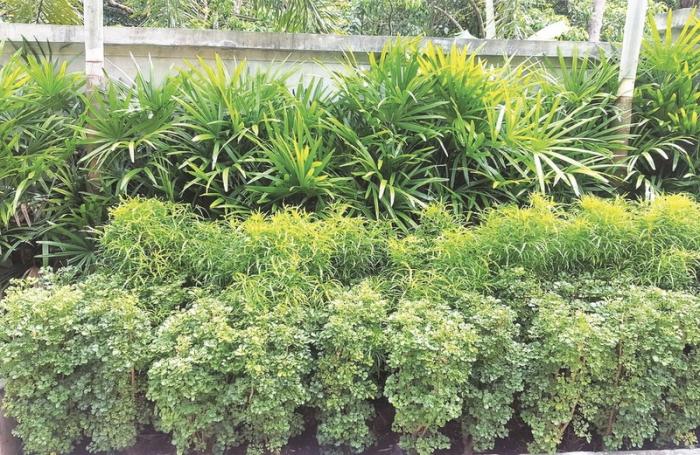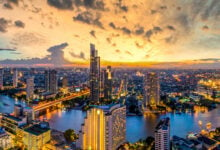Gardening: Returning to the scene of the crime

PHUKET: I was recently asked to return to the scene of a crime. Well, not an actual one, but an on-site consultation at which I was asked how the neglected common parts of an estate might be given – literally – a new lease on life. This is a high-end residential estate with spectacular villas perched on a precipitous hillside overlooking the sea. Many of their secluded gardens, set behind high retaining walls were, and are, immaculately maintained. My brief concerned the steep roadside areas flanked by high gray walls that effectively shut out much of the sunshine that most tropical plants require.
The chairman of the residents’ committee asked me for a detailed chart. In it, I suggested specific plants for areas in deep shade, filtered shade and even full sun. The soil was another consideration. As is so often the way in Phuket, it was poor, as struggling heliconias and costus demonstrated. It needed both enriching topsoil, and the addition of amendments such as compost, to give it a more friable structure. Contained in narrow, roadside troughs – with many fronting existing walls and with perhaps 18 inches of soil – new arrivals would require plenty of nutrients.
Our scheme, put into practical effect by property management company CBRE, has been a conspicuous success, thanks to appropriate shrubs and trees, and conscientious daily maintenance. Most were chosen for their value as attractive, evergreen foliage cover and adaptability in variable conditions. One wall now has a metal trellis with garlic vines already spreading their tendrils everywhere. Assuredly, the wall will soon vanish beneath green foliage and masses of pink blooms. Higher up, the scheme incorporates layered plantings: low-growing plants at the edge, with taller ones behind, and substantial trees or shrubs forming a screen at the rear.
The principle of graduated beds was developed long ago by Gertrude Jekyll in the UK, but unlike her choice of herbaceous flowering plants, this scheme employs different textures and shades of green. At the front are ever-reliable polyscias guilfolei with variegated, dentate leaves; behind, vivid sap-green polyscias fruticosa with narrow crinkly foliage, to provide a contrasting, colorful screen. And finally, as a dramatic, darker background, rows of lady palms (rhapis). In some places, elegant foxtail palms have been added to create a fourth dimension. Elsewhere, ubiquitous Korean banyans, popular screening plants already clipped into shape, are masking walls with their dense, glossy, evergreen foliage.
Nearby lies a vivid clump of purple dracaenas. Hanging plants festoon gray walls, softening harsh outlines. And peace lilies (spathiphyllum) enhance a gloomy stretch of road, along with massive alocasias, which sprout from the jungle-like background.
The prospect is inviting. Instead of dull grey walls and patches of straggly shrubs, lush verdant avenues now welcome residents and visitors alike.
If you have gardening or environmental concerns, contact Patrick at drpaccampbell@gmail.com. Many of his creative and academic publications can be found at his website: Green galoshes WordPress.
— Patrick Campbell
Leave a Reply
You must be logged in to post a comment.








